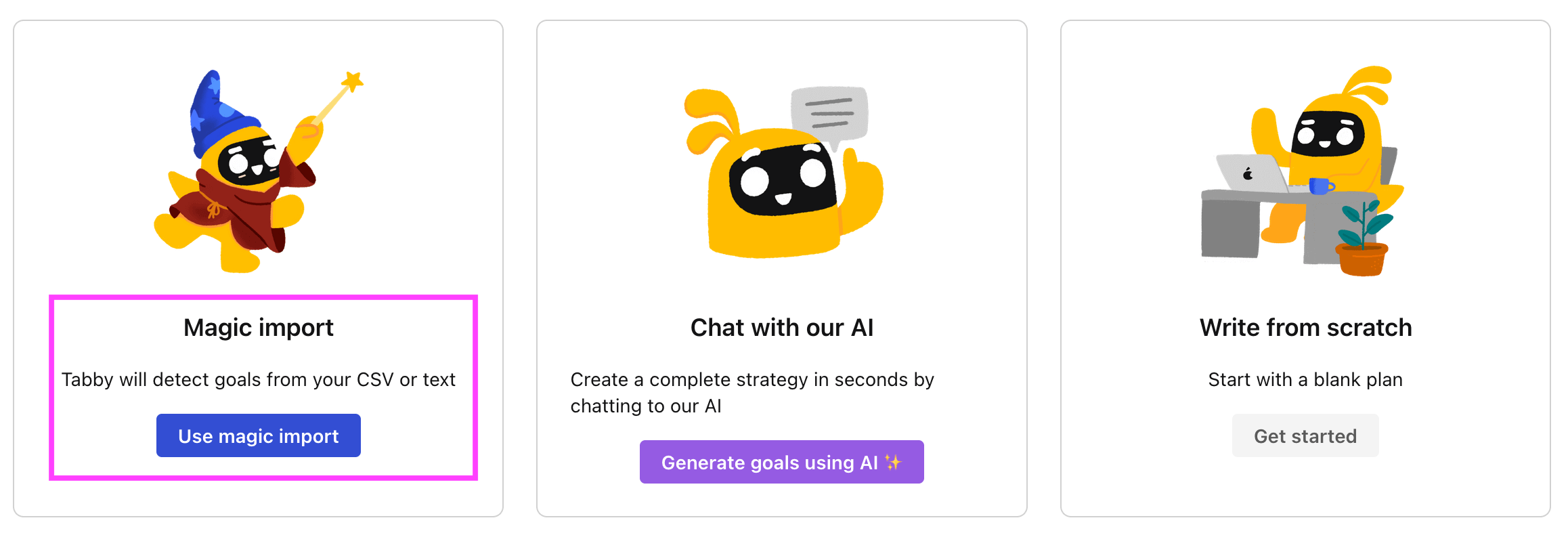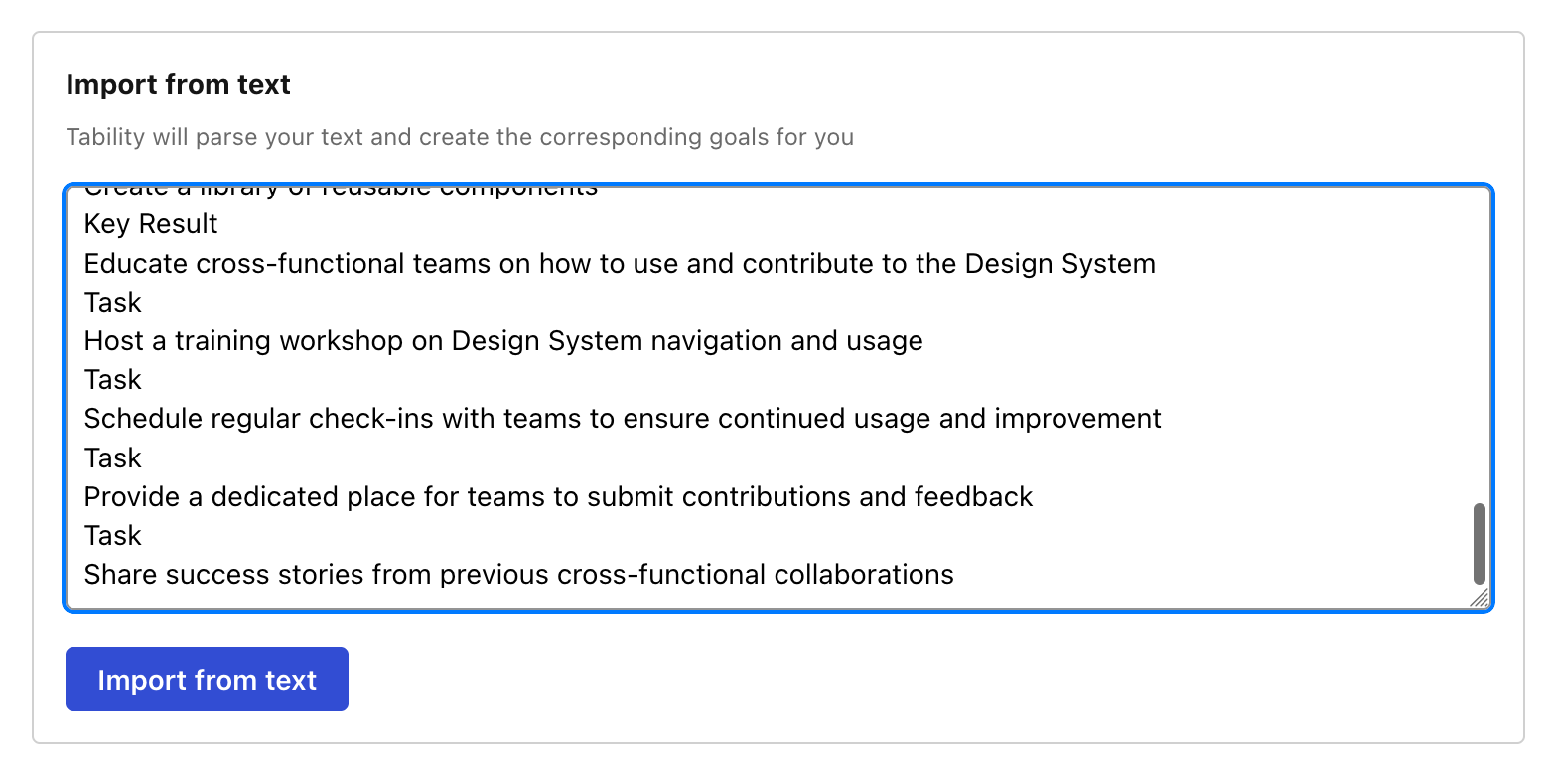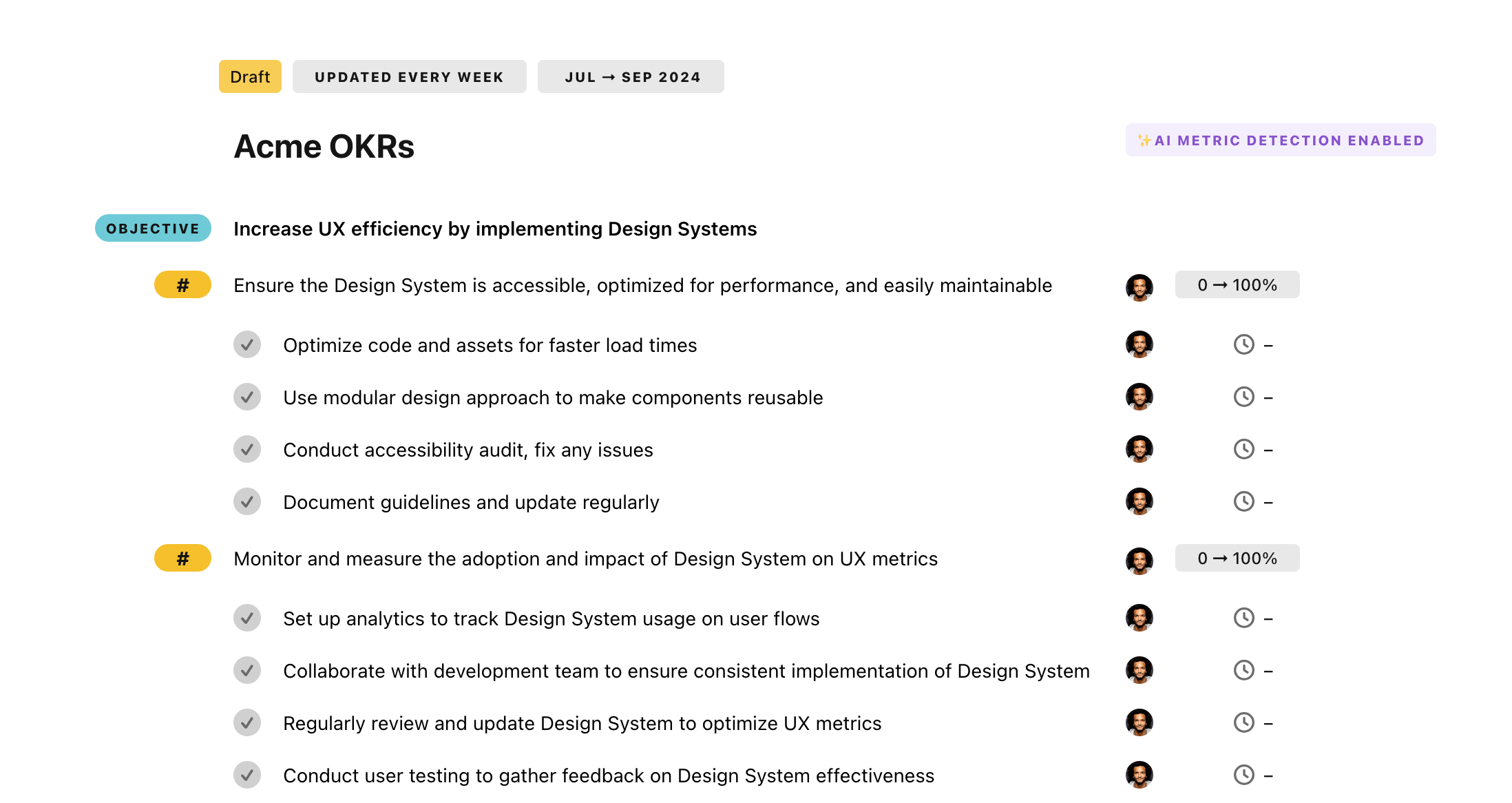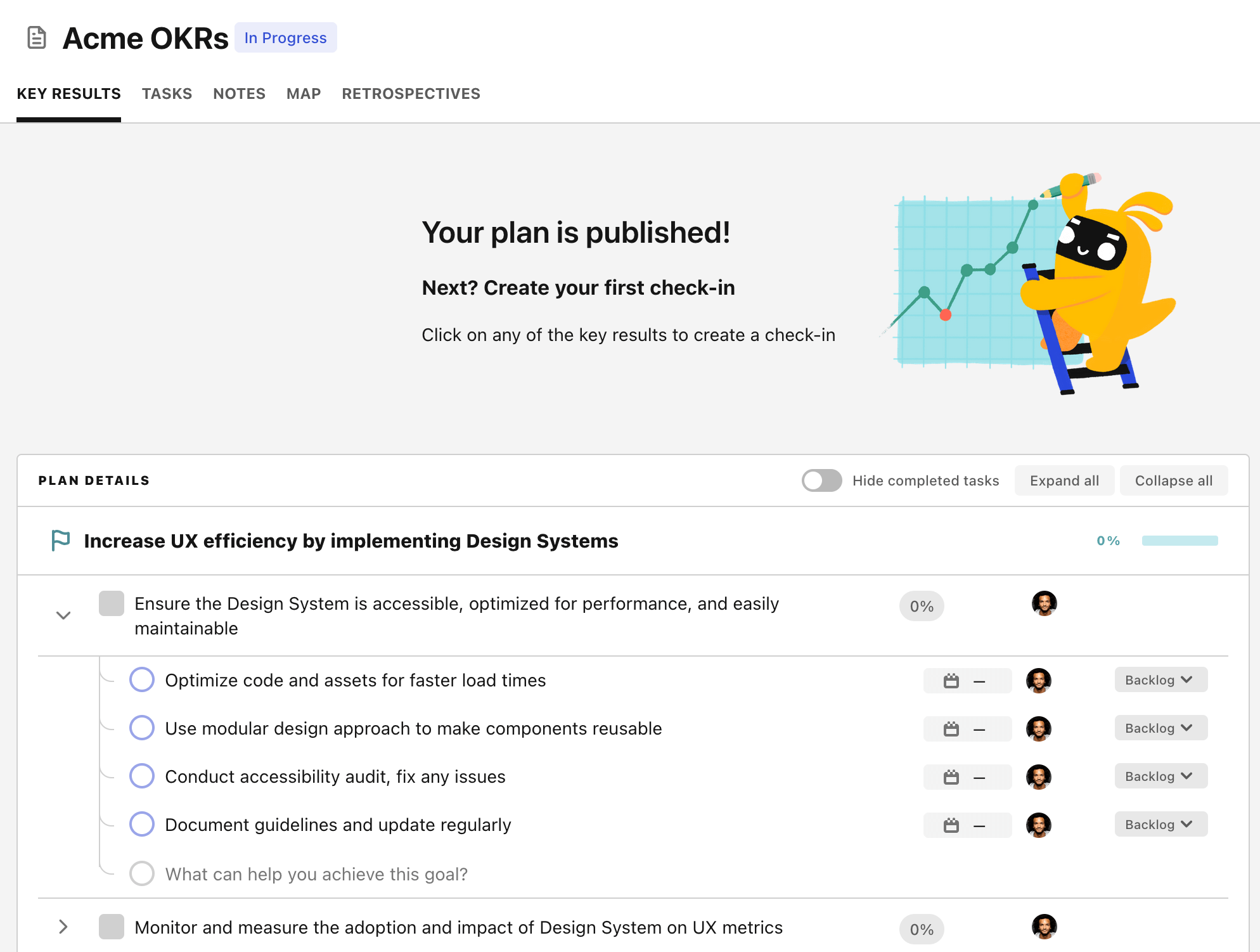OKR template to enhance productivity in maintenance management
Your OKR template
To accomplish the first objective, response times to maintenance requests can improved by 15%. The initiatives outlined to achieve this include: conducting prioritization training for maintenance staff, implementing an online ticketing system for maintenance requests, and assigning specific tasks to each staff member.
The second objective is to increase workflow automation by 30%. This can be achieved by identifying manual processes that are susceptible to automation, implementing automation software in those areas, and training staff on how to use the new automated systems.
The final objective is to reduce maintenance downtime by 20%. This will be accomplished through regular updates and optimization of machinery, improving training on equipment usage, and implementing predictive maintenance strategies.
ObjectiveEnhance productivity in maintenance management
KRImprove response time to maintenance requests by 15%
Conduct prioritization training for maintenance staff
Implement an online ticketing system for maintenance requests
Assign specific tasks to each staff member
KRIncrease workflow automation by 30%
Identify manual processes susceptible to automation
Implement automation software in those areas
Train staff on utilizing newly automated systems
KRReduce maintenance downtime by 20%
Regularly update and optimize machinery
Improve training on equipment usage
Implement predictive maintenance strategies
How to edit and track OKRs with Tability
You'll probably want to edit the examples in this post, and Tability is the perfect tool for it.
Tability is an AI-powered platform that helps teams set better goals, monitor execution, and get help to achieve their objectives faster.
With Tability you can:
- Use AI to draft a complete set of OKRs in seconds
- Connect your OKRs and team goals to your project
- Automate reporting with integrations and built-in dashboard
Instead of having to copy the content of the OKR examples in a doc or spreadsheet, you can use Tability’s magic importer to start using any of the examples in this page.
The import process can be done in seconds, allowing you to edit OKRs directly in a platform that knows how to manage and track goals.
Step 1. Sign up for a free Tability account
Go tohttps://tability.app/signup and create your account (it's free!)
Step 2. Create a plan
Follow the steps after your onboarding to create your first plan, you should get to a page that looks like the picture below.

Step 3. Use the magic importer
Click on Use magic import to open up the Magic Import modal.
Now, go back to the OKR examples, and click on Copy on the example that you’d like to use.

Paste the content in the text import section. Don’t worry about the formatting, Tability’s AI will be able to parse it!

Now, just click on Import from text and let the magic happen.

Once your example is in the plan editor, you will be able to:
- Edit the objectives, key results, and tasks
- Click on the target 0 → 100% to set better target
- Use the tips and the AI to refine your goals
Step 4. Publish your plan
Once you’re done editing, you can publish your plan to switch to the goal-tracking mode.

From there you will have access to all the features that will help you and your team save hours with OKR reporting.
- 10+ built-in dashboards to visualise progress on your goals
- Weekly reminders, data connectors, and smart notifications
- 9 views to map OKRs to strategic projects
- Strategy map to align teams at scale